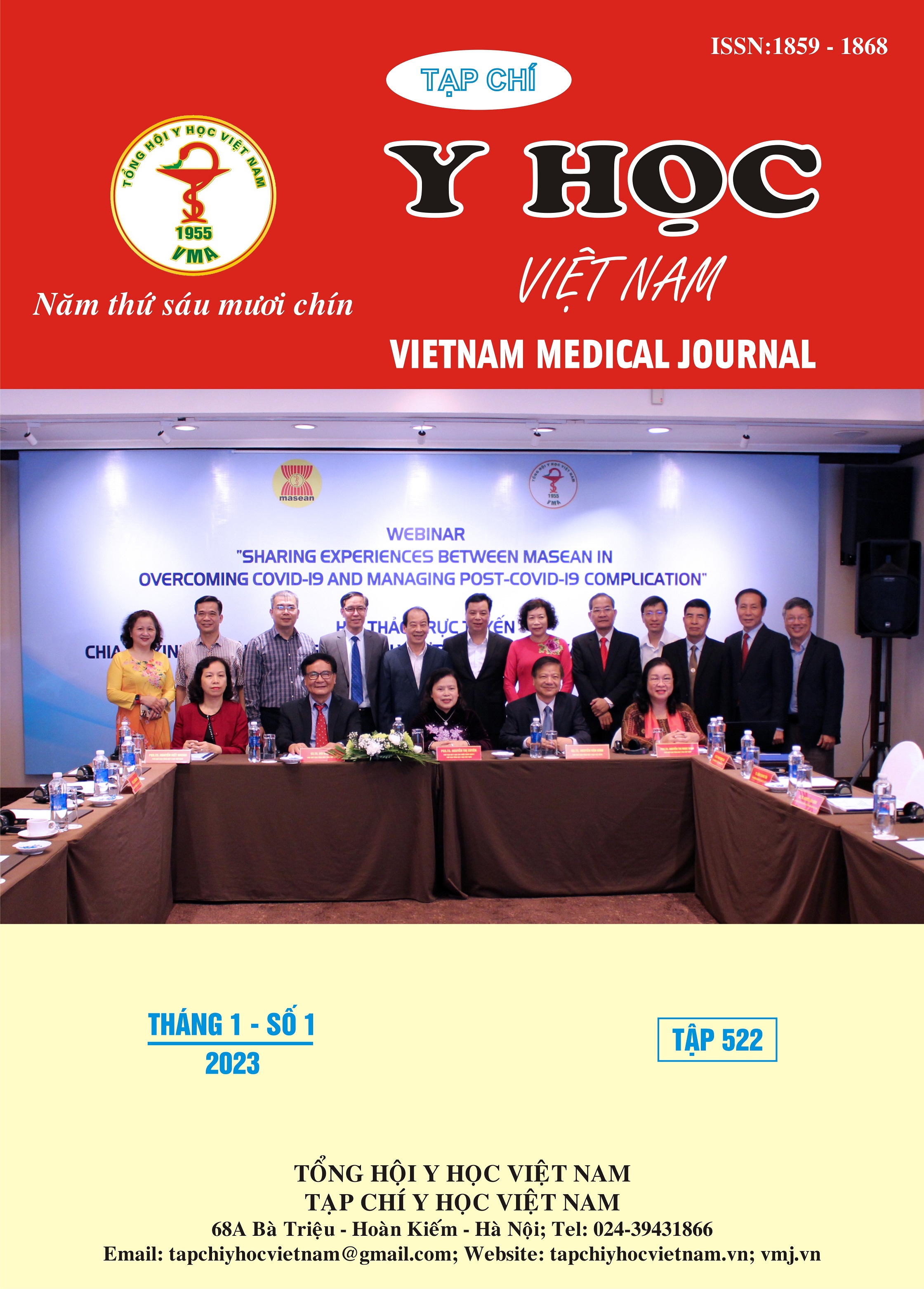TÌNH HÌNH ĐỀ KHÁNG VÀ SỬ DỤNG KHÁNG SINH TRONG ĐIỀU TRỊ NHIỄM KHUẨN DO ESCHERICHIA COLI VÀ KLEBSIELLA PNEUMONIAE TẠI BỆNH VIỆN THỐNG NHẤT
Nội dung chính của bài viết
Tóm tắt
Mở đầu: Tình trạng đề kháng kháng sinh của vi khuẩn Escherichia coli và Klebsiella pneumoniae ngày càng nghiêm trọng, có thể dẫn tới kéo dài thời gian nằm viện và thất bại điều trị ở những bệnh nhân nhiễm khuẩn. Mục tiêu: Khảo sát đặc điểm vi sinh, tình hình đề kháng, đặc điểm sử dụng kháng sinh và tính phù hợp trong sử dụng kháng sinh điều trị nhiễm khuẩn do Escherichia coli và Klebsiella pneumoniae tại bệnh viện Thống Nhất. Đối tượng và phương pháp nghiên cứu: Nghiên cứu mô tả cắt ngang được tiến hành trên 203 hồ sơ bệnh án của bệnh nhân được chẩn đoán nhiễm khuẩn, có ít nhất một mẫu cấy bệnh phẩm phân lập được Escherichia coli và/hoặc Klebsiella pneumoniae tại bệnh viện Thống Nhất từ tháng 01/2021 đến tháng 05/2021. Các tiêu chí khảo sát bao gồm: đặc điểm chung của mẫu nghiên cứu, đặc điểm vi sinh, sự đề kháng kháng sinh và đặc điểm sử dụng kháng sinh. Tính phù hợp của kháng sinh kinh nghiệm được đánh giá dựa theo Hướng dẫn sử dụng kháng sinh của bệnh viện Thống Nhất năm 2019. Kết quả: Tỷ lệ Escherichia coli sinh β-lactamase phổ rộng (ESBL) cao hơn khoảng 3 lần so với Klebsiella pneumoniae (61,3% so với 17,1%). Vi khuẩn đề kháng cao với penicillin, cephalosporin và fluoroquinolone. Klebsiella pneumoniae không sinh ESBL nhạy cảm thấp với carbapenem (53-54%). Phần lớn bệnh nhân được chỉ định phác đồ kinh nghiệm đơn trị (33,7%) hoặc phối hợp hai kháng sinh (50,8%). Cephalosporin và fluoroquinolone là 2 nhóm kháng sinh sử dụng nhiều nhất. Tính phù hợp chung của kháng sinh kinh nghiệm theo hướng dẫn là 70,9%. Kết luận: Cần cập nhật Hướng dẫn sử dụng kháng sinh của bệnh viện dựa trên tình hình đề kháng hiện tại nhằm cải thiện tỷ lệ sử dụng kháng sinh phù hợp.
Chi tiết bài viết
Từ khóa
Nhiễm khuẩn, Escherichia coli, Klebsiella pneumoniae, ESBL, kháng sinh
Tài liệu tham khảo
2. Centers for Disease Control and Prevention (2019 ), Antibiotic resistance threats in the United States, CDC Website, https://www.cdc.gov/ drugresistance/index.html, ngày truy cập 01/05/2022.
3. Huỳnh Thị Hồng Nghĩa , Đông Thị Hoài Tâm (2014), "Nhiễm trùng từ cộng đồng do Enterobacteriaceae tiết men beta-lactamase phổ rộng tại Bệnh viện Nhiệt đối TP. Hồ Chí Minh", Tạp chí Y học Thành Phố Hồ Chí Minh. 20 (1), pp. 247-252.
4. Nguyễn Ngọc Triển (2020), Phân tích đặc điểm lâm sàng, vi sinh và sử dụng kháng sinh điều trị nhiễm khuẩn huyết do Klebsiella pneumoniae và Escherichia coli tại Viện huyết học - truyền máu trung ương, Đại học Dược Hà Nội.
5. Mody L. (2021), Approach to infection in the older adult, Uptodate, https:// www.uptodate.com/ contents/approach-to-infection-in-the-older adult?source= history_mobile#H1498024, ngày truy cập 22/06/2022.
6. Duin D. v. (2012), "Diagnostic challenges and opportunities in older adults with infectious diseases", Clinical infectious diseases : an official publication of the Infectious Diseases Society of America. 54 (7), pp. 973-978.
7. Doi Y., Iovleva A. , Bonomo R. A. (2017), "The ecology of extended-spectrum β-lactamases (ESBLs) in the developed world", J Travel Med. 24 (1), pp. S44-S51.
8. Wolters Kluwer Health Lexicomp: Lexi-Drugs Mutinational, Lexicomp Company, ngày truy cập May 30, 2022.
9. Neu H. C. (1991), "Synergy and antagonism of combinations with quinolones", European Journal of Clinical Microbiology and Infectious Diseases. 10 (4), pp. 255-261.
10.Al-Hasan M. N., Wilson J. W., Lahr B. D. et al. (2009), "Beta-lactam and fluoroquinolone combination antibiotic therapy for bacteremia caused by gram-negative bacilli", Antimicrob Agents Chemother. 53 (4), pp. 1386-1394.


